I was really excited to receive the latest version of Pamphlet Architecture, published by Princeton Architectural Press. While I’ve not seen all of them, i do have at least a dozen, and they offer focused snapshots of theory and practice both as well as a longitudinal section of though spanning decades. My first experience was PA15: War and Architecture featuring Lebbeus Woods, which i picked up as an undergrad and was blown away. I’ve since picked up issues sporadically, including the great PA21: Situation Normal featuring the work of Lewis.Tsrumaki.Lewis (1998), PA23: Sites of Trauma with Johanna Saleh Dickson (2002), PA28: Augmented Landscapes by Smout Allen (2007), and PA30: Coupling featuring work and thoughts by InfraNet Lab and Lateral Office (2011).
The most recent version, PA35: Going Live: From States to Systems, was published earlier in November, edited by Pierre Bélanger and featuring work from his design research arm opsys.
I thought Bélanger’s essay ‘Synthetic Surfaces’ in the Landscape Urbanism Reader, was interesting, and was interested to see the work as well from he and others around this topic. For starters, some context, via the blurb snipped below on Amazon:
“”If landscape is more than milieu or environment, and encompasses a deterritorialized world, then it is the contested territory, hidden actor, and secret agent of the twentieth century. Stemming from the early work of some of the most influential landscape urbanists–Frank Lloyd Wright, Ludwig Hilberseimer, Benton MacKaye, Patrick Geddes–this mini manifesto explores underdeveloped patterns and unfinished processes of urbanization at the precise moment when environmentalism began to fail and ecology emerged between the 1970s and 80s. Informed by systems thinking from the modern atomic age, this slim silver pamphlet takes inspiration from Howard T. Odum’s big green book A Tropical Rain Forest and brings alive the voices of a group of influential thinkers to exhume a body of ideas buried in the fallout of the explosion of digitalism, urbanism and deconstructivism during the early 1990s. Catalyzed by Chernobyl’s nuclear reactor meltdown, a counter-modernity and neo-urbanism emerged from the fall of the Berlin wall and the end of South African Apartheid. What happened during this concentrated era and area of change–across design, from architecture to planning–is nothing short of revolutionary.”
The opening essays start provide some more context, and the crux is really what is said about the timing of the emergence of ecology in the 70s and 80s and how this is now fully integrated, after almost 50 years, into practice. I do want to find a copy of Odum’s ‘A Tropical Rain Forest‘ after reading the introductory info – perhaps the biggest gem this small volume offers.
Readers should be warned, this is not a trifle, but a dense exploration with a number of unexplained references and jargon – the kind of stuff that makes people roll their eyes and dismiss academic posturing as oh so much BS. Frankly the intro is probably one of the most annoying passages I’ve read in a while and the first sections were equally obtuse. It evens out a bit as you continue, but coupled with way too small text and only black and white imagery, it’s a bit of a slog. As in not enjoyable to read or engage in.
So if you’re still with me – check out the diagrams, and maybe read a section or two. When you get into them, are quite beautiful and the text has value – exploring some of the themes of landscape and infrastructure from Keller Easterling and Sanford Kwinter. Go to well lit room, with a magnifying glass and a lot of coffee and have fun.
I was initially put off by the reliance on only black and white imagery, as it seems anachronistic, more of a trope than a reason for its use in this particularly context. But they work and the idea of communication that transcends color – in these densely packed montages attempt to communicate a ton of info – sometimes it works, sometimes it doesn’t. Probably the best part of this volume – sometimes it’s amazing and you find yourself staring at a page for way too long. If they were 2x as big it’d be even better.
So as far as the takeaway for he at this point, I’m really intrigued by the graphics, and some of the experimentation. While i was initially put off by the black at white imagery, as i mentioned, but after looking at it multiple times, and viewing digital images, it does have a quality that perhaps obscured by our typical splashes of color.
Even as a pamphlet – the writings, well, I feel would have benefited greatly from a tougher editor that reined in some of the language and obscure references. I’ve read enough academic and dense writings that i can muddle through the most difficult, so I definitely don’t need my hand held. But there were so many opportunities to add one small explanation of a concept, rather than just leave the reader hanging, or googling, to understand some obscure reference or word choice. Belanger’s other writings didn’t seem so hard to parse. This was exhausting.
If you read it let me know what you thing. Got some ideas or thoughts. Let me know.
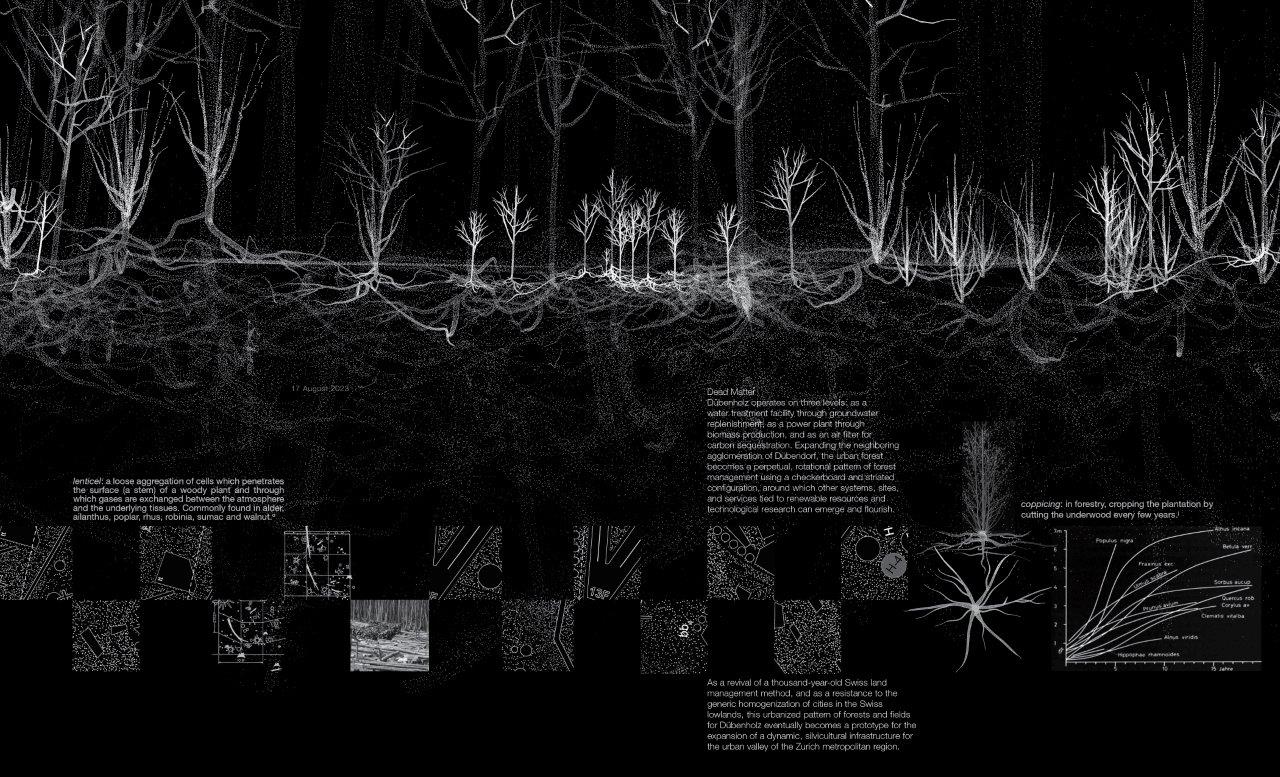
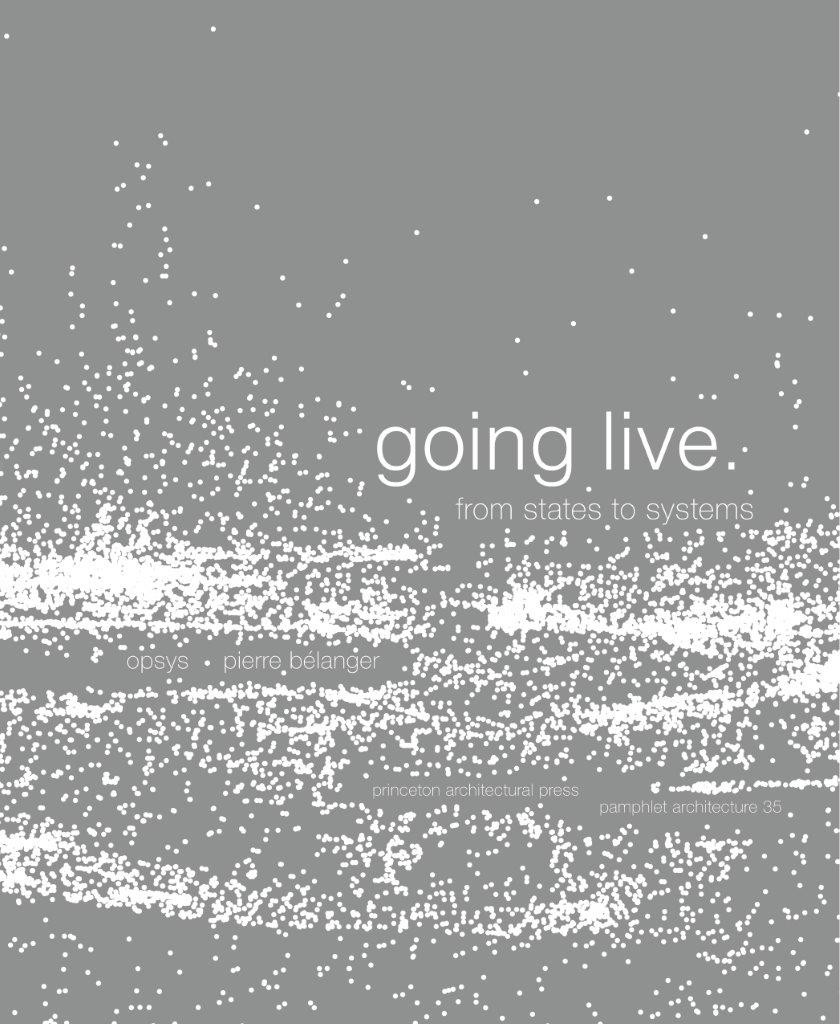
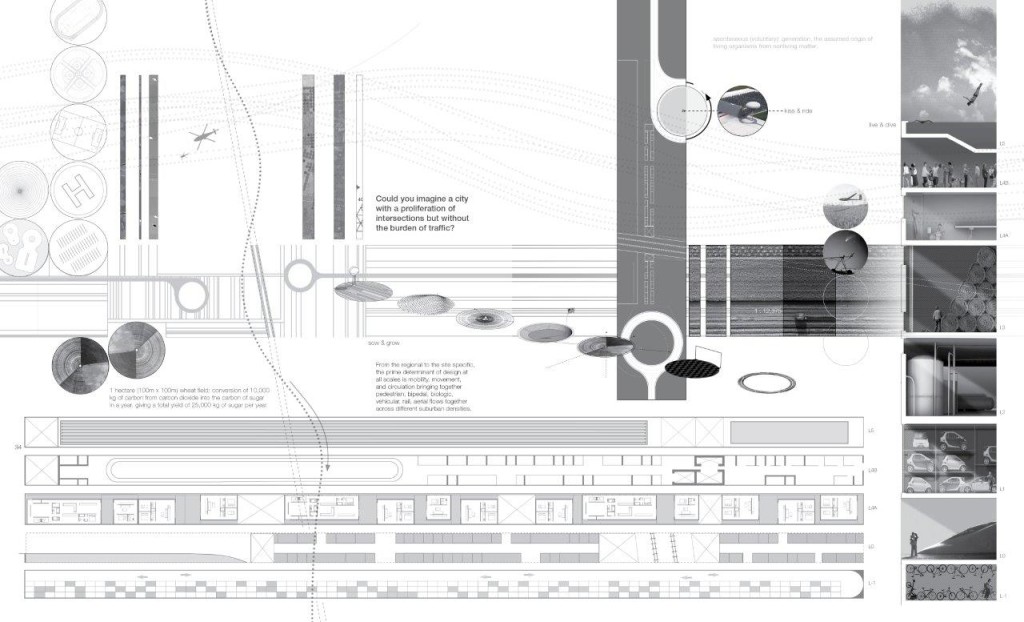
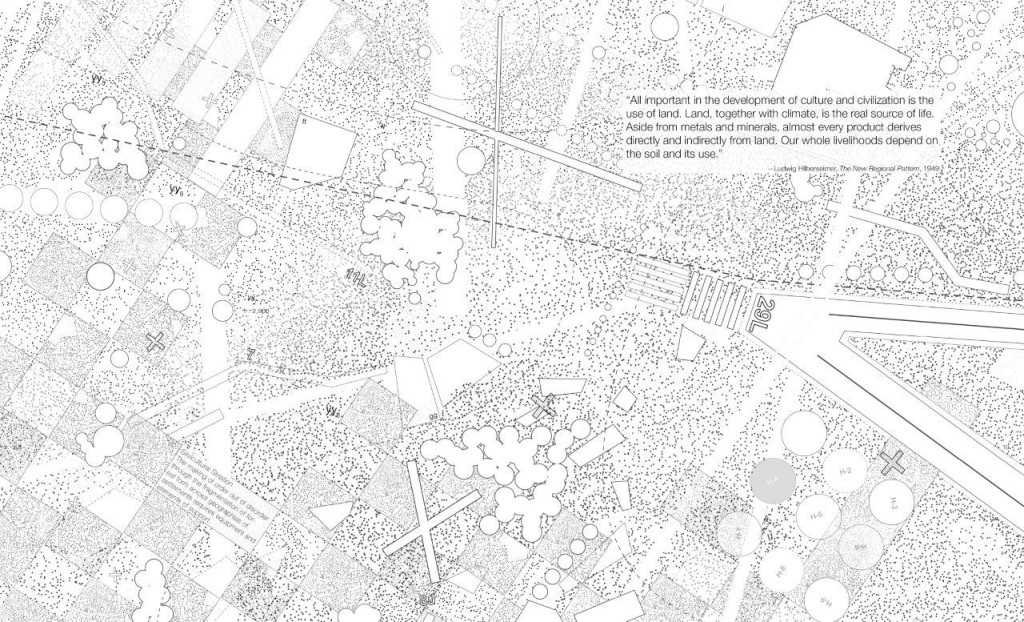
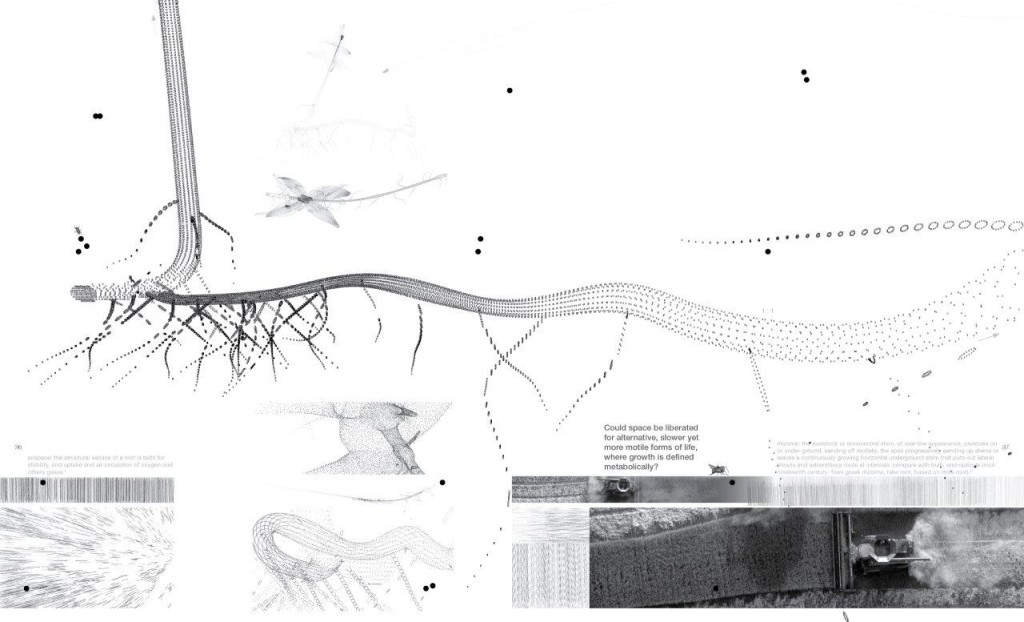
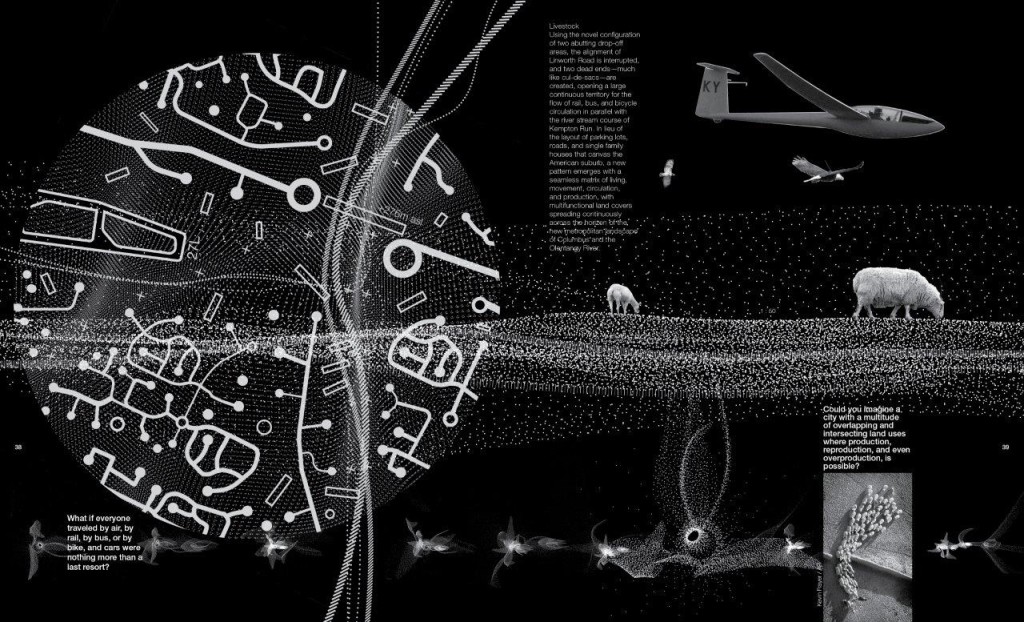
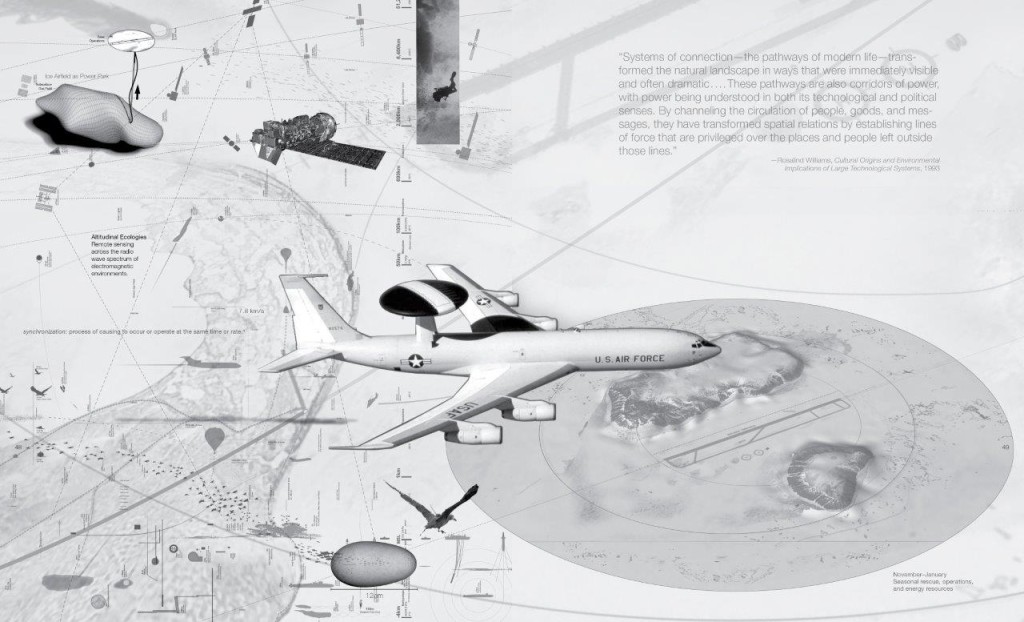
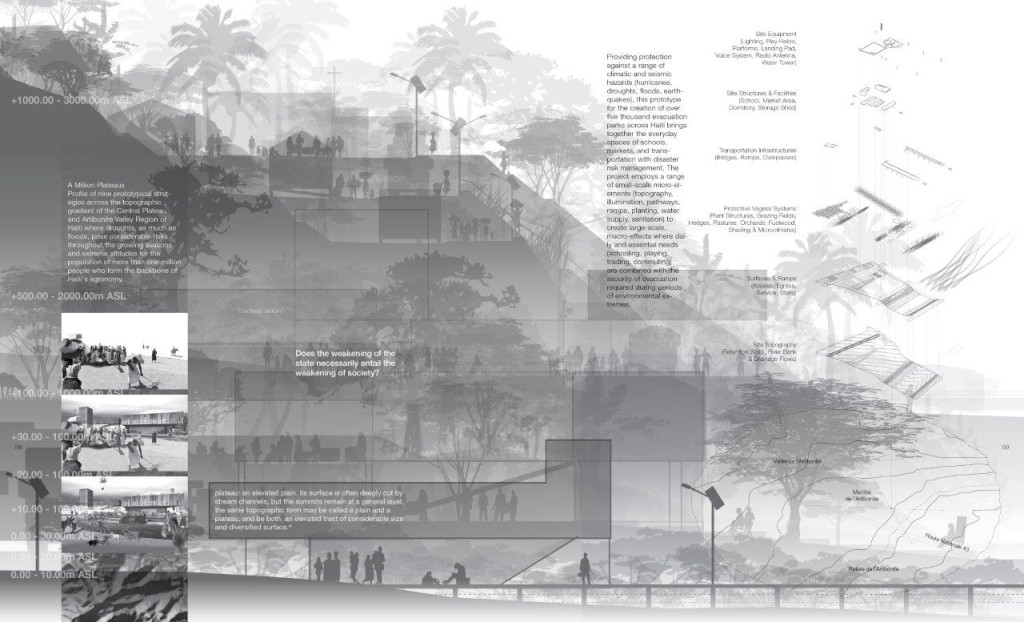
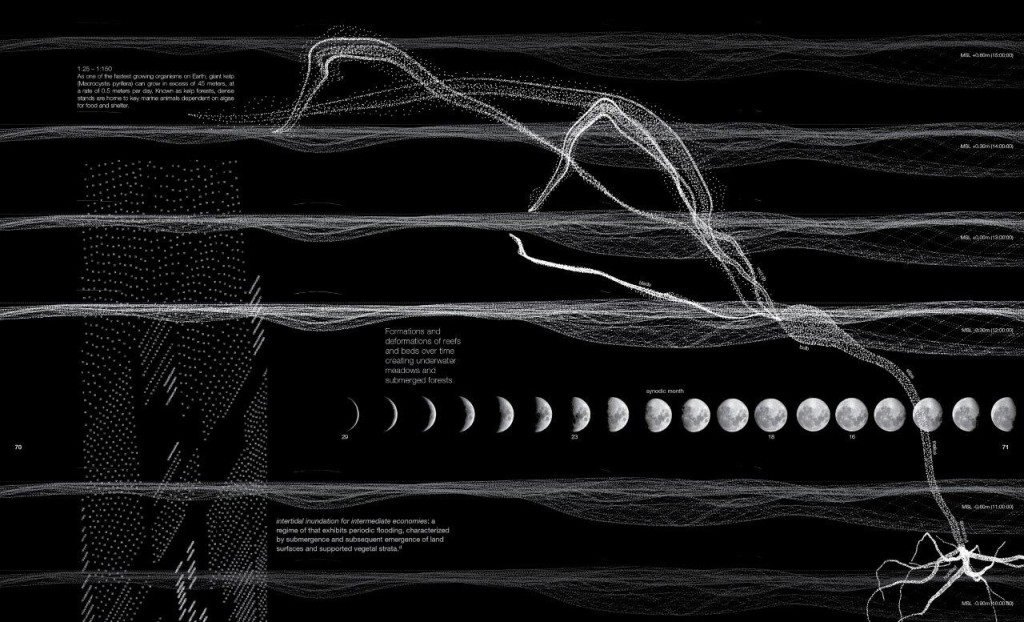
I would make only four comments:
1. I believe PA requires black and white submissions
2. This is the first Landscape Architect to do a PA, so may be driven by a different agenda
3. I hardly think academics would call this pure academics it falls outside both traditional academics and standard practice
4. The work is driven by maps and codes of difference it is closer to the politics of the avant garde and therefore meant to not only be informative, but also provocative and challenging.
Great points Robert. Much appreciate the thoughts.
It’d been a bit since I’ve look at previous PAs, so didn’t really register that they are all B/W. I understand the pamphlet nature allows for non-academic bent and some healthy experimentation, and agree, it’s not academic in that sense. So more likely I meant academic in use of ‘intellectual’ language. Perhaps it is more appropriately stated as ‘jargon’, as it just felt a bit too casually obtuse. Folks have obviously leveled the ‘academic’ argument or insider ‘jargon’ at plenty of LA/Arch and particularly LU writing I’ve mentioned here in other posts — which always elicits interesting discussions on how we should communicate. On one hand, there are arguments to make it accessible and simplify so it can share a broader base, and that writers that don’t are being purposely obtuse to show they are smart; on the other hand, there are arguments to use the language appropriate to the message your are trying to convey because we are discussing complex and nuanced topic. I go back and forth depending on the audience, but mostly subscribe to the latter argument.
Your point about it as a avant garde statement is a good one and relevant to the language discussion. I do agree that it was meant to provoke and challenge but I didn’t really have that thought at all while reading. I was challenging, so thinking back that’s a good thing to understand. I also didn’t say NOT to read it, but rather say, this one is gonna be tough. And I did get good stuff from it (and am still working through it)… and it’s really good to feel challenged.
In this case I mostly felt annoyed. If this is the first LA to be published as part of this series, it shows a very specific type of analysis and writing worthy of the overall LA oeuvre, but perhaps off-putting to those who may delve into it without understanding the context. That frame of reference is important. So I put off posting anything for a long time because i didn’t know how to articulate it, so finally just gave up and posted this – which was not a detailed breakdown of the work but more of an impression. Sometimes I don’t post at all when i get/read stuff I don’t like – which I often have to explain to publishers that send me books to review!. In this case i thought it fair for me to comment on my reactions, and mostly on the fact that previous PAs never felt as inaccessible or challenging as this.
Alas, there’s lots in there, once you unlock it, with good lighting a magnifying glasses (the too small font criticism i will strongly stand by!).
So I take it that you’ve read it, beyond the reference to it being ‘driven by maps and code of difference’ – I’d be curious what yours (or others) take is on the work – i.e. what you got out of it?
I have a signed copy…..Full disclosure, he was once my thesis student and has gone on to to make incredible and important inroads in Landscape architecture theory and in what can only be called creative professional practice. He is a clear example of the academic practitioner or what I would call the hybridization of applied research and creative practice beyond traditional consulting or academic scholarship. this PA will be only one of a series of books he will produce in the next few years on the themes of the Military Landscape, Haiti, Extraction etc.
I place him critically as one of the new and if i may be permitted to use the word “best” voices of his generation in landscape architecture, moving beyond the “tyranny of the picturesque” that for so long has held Landscape architecture inert. I would compare his influence in my field to the impact the Dadaists had on art. Their work was confrontational and as political as possible to break a stasis in the train of thought in their time.It is totally impossible to describe him, but think of him as the protegeny of Ian McHarg, Arno Peters, Eugene Odum , Keller Easterling and David Carson. someone to keep you eyes and mind on. I would suggest to be fair to him you should interview him, you might be very surprised what you may find.
Thanks – appreciate that perspective and info.